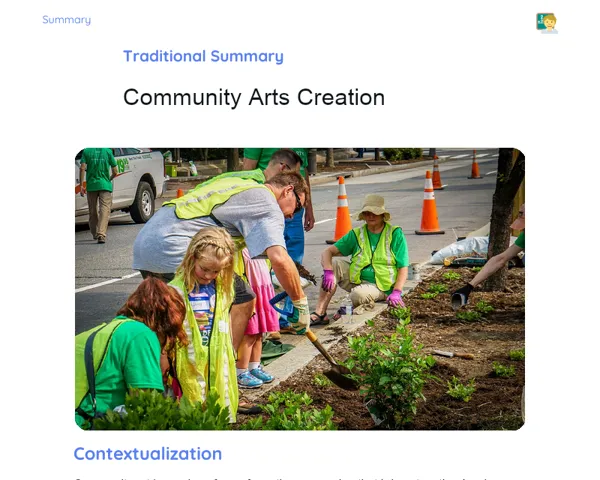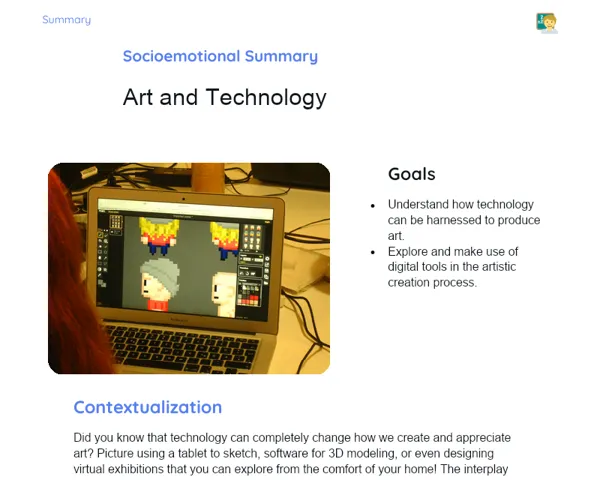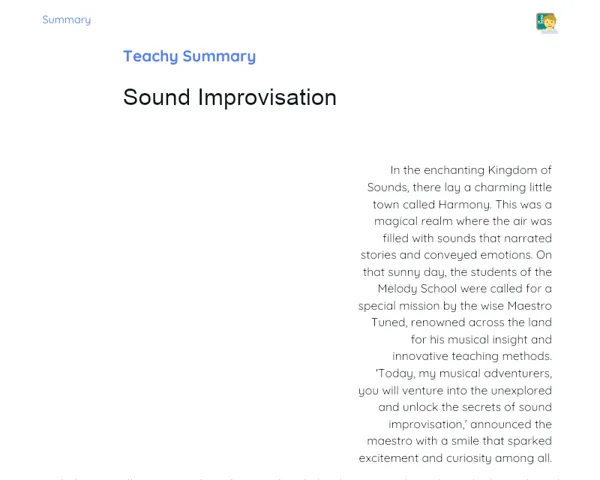Summary Tradisional | Art: Ancient Persia
Contextualization
Ancient Persian art stands as one of the richest and most captivating legacies of human civilization, emerging from what is present-day Iran. The Persian Empire, spanning dynasties such as the Achaemenids, Parthians, and Sassanids, was not only known for its military achievements but also for its immense cultural and artistic contributions. Persian art reflects a harmonious blend of influences from various cultures, including Egyptian, Greek, and Mesopotamian, showcasing the empire's diversity and sophistication.
Leaders like Darius I and Xerxes were depicted in art with immense dignity, often presented as divine or semi-divine figures, reinforcing their power and authority. The remarkable Persian architecture, exemplified by grand palaces like Persepolis and Pasargadae, was characterized by colossal columns and sturdy materials such as stone and brick. Furthermore, Zoroastrianism had a substantial impact on Persian art, with religious symbolism woven into sculptures and reliefs, promoting values such as truth and order.
To Remember!
Representation of Leaders
The depiction of leaders in ancient Persian art is one of the most striking and significant elements. The sculptures and reliefs found at places like Persepolis showcase figures like Darius I and Xerxes with great grandeur. These figures were often represented as divine or semi-divine, a strategy to legitimize the rulers' power and reinforce their authority over the vast Persian Empire. The intricate details and symbolism in these artworks portrayed the leaders in powerful stances, often accompanied by smaller figures representing subjects or lesser deities.
The iconography used in the sculptures and reliefs is rich with meaning. For instance, Darius I is frequently shown holding a scepter or a bow, emblems of his military and governmental strength. Portraying leaders as divine figures not only emphasized their power but also created a link between human leadership and divine will, reinforcing the belief that Persian kings were chosen by the gods.
Moreover, these representations played a crucial role in the political messaging of the empire. The reliefs and sculptures were prominently displayed in public areas or on grand monuments, reaching a wide audience, including envoys from other nations. This projection of power and prosperity served to deter potential adversaries and solidify the loyalty of subjects.
The artistic finesse in the depiction of leaders highlights the skill and sophistication of Persian artists. Every detail, from attire to ornaments, was meticulously crafted to convey a sense of opulence and authority.
-
Leaders depicted as divine or semi-divine figures.
-
Symbols like scepters and bows used to signify power.
-
Public sculptures and reliefs as tools of political messaging.
-
Artistic details showcasing the craftsmanship and sophistication.
Persian Architecture
Ancient Persian architecture is celebrated for its grandeur and innovation. The palaces at Persepolis and Pasargadae are prime examples, marked by the use of colossal columns and durable materials such as stone and brick. These structures served not only as royal residences but also as administrative and ceremonial hubs, reflecting the power and organization of the empire. The towering columns, often enhanced with intricate reliefs, were designed to leave a lasting impression on visitors and ambassadors.
The palaces at Persepolis, for instance, were constructed by Darius I and his successors, serving as venues for significant ceremonies and tributes from across the empire. The monumental scale of the architecture, alongside the complexity of the reliefs and sculptures, fostered an atmosphere of authority and reverence. The spatial layout of these palaces also mirrored social and political hierarchies, with designated areas for various functions and levels of access.
Persian architecture also embraced influences from other cultures, such as Mesopotamian, Egyptian, and Greek, leading to a unique and cohesive aesthetic. For example, the structural use of columns and the palace layouts show Greek architectural traits, while the materials and construction techniques bear the hallmarks of Mesopotamian traditions. This blend of styles not only amplified the grandeur of the buildings but also highlighted the empire's capacity to absorb and harmonize diverse cultural influences.
In addition to palaces, Persian architecture encompasses temples, tombs, and other religious edifices that often displayed Zoroastrian symbolism. These structures served functional purposes while articulating the values and spirituality of the empire, emphasizing themes of truth and order.
-
Colossal columns and sturdy materials featured prominently.
-
Palaces functioning as administrative and ceremonial centers.
-
Integration of various cultural influences in architectural design.
-
Religious symbolism evident in architectural structures.
Influence of Zoroastrian Religion
Zoroastrianism significantly influenced Persian art, deeply infusing its sculptures, reliefs, and architectural forms. As one of the world’s oldest religions, it revolves around the worship of Ahura Mazda, the supreme god, and the conflict between good and evil. This moral dichotomy, along with the reverence for Ahura Mazda, is evident in Persian art, which employs symbolism and iconography to communicate religious and ethical tenets.
Reliefs and sculptures frequently featured representations of Ahura Mazda, often depicted as a winged figure, symbolizing the protective deity of both the king and the empire. This not only legitimized the divine authority of the rulers but also promoted Zoroastrian ideals of truth and order. The prevalence of such religious motifs in public spaces and significant edifices underscores the integral role of religion in the daily life and governance of the empire.
Moreover, religious architecture, including fire temples, profoundly reflected Zoroastrian principles. These temples, dedicated to Ahura Mazda, were often situated on elevated ground, symbolizing closeness to the divine. Fire, a pivotal element of Zoroastrian worship, was continually maintained in these temples, representing the light of truth and the ever-present essence of Ahura Mazda.
The impact of religion on Persian art transcended mere religious representation. Values such as order, justice, and truth—central to Zoroastrianism—were woven into artistic expressions and architecture, portraying an idealized image of Persian society in alignment with divine principles.
-
Art reflecting the worship of Ahura Mazda.
-
Religious symbolism emphasizing truth and order.
-
Fire temples as examples of religious architecture.
-
Zoroastrian values integrated into art and architectural forms.
Persian Culture and History
Understanding ancient Persian art necessitates an appreciation of the rich culture and history of the Persian Empire. At its zenith, the empire stretched from Egypt to the Indus Valley, serving as a melting pot of various cultures and ethnicities, each contributing to the vibrancy and diversity of Persian art. This cultural amalgamation is evident in the fusing of artistic styles and techniques, culminating in unique and innovative works.
Persian history is marked by powerful dynasties, including the Achaemenids, Parthians, and Sassanids, each leaving an indelible mark on art and architecture. For instance, the Achaemenid dynasty, led by figures like Cyrus the Great and Darius I, is celebrated for grand constructions and an artistic style that harmonized influences from different regions within the empire. The art from this period is characterized by its monumental scale and the usage of political and religious symbolism.
Successors of the Achaemenids, such as the Parthians and Sassanids, also made significant contributions to the evolution of Persian art. Parthian art is noted for its lifelike and intricate sculptures, while Sassanian art introduced innovative decorative elements and techniques, impacting future artistic traditions in Iran and beyond. These dynasties not only upheld the artistic legacy of the Achaemenids but also contributed their own innovations, reflecting the cultural and political shifts of their time.
Exploring Persian culture and history is vital for grasping the depth and complexity of ancient Persian art. The interaction of diverse cultures, political dynamics, and religious influences fostered a rich creative environment, leading to artworks that continue to be admired today for their aesthetic appeal and significance.
-
Cultural diversity of the Persian Empire mirrored in its art.
-
Artistic influences from dynasties such as Achaemenids, Parthians, and Sassanids.
-
Fusion of artistic styles and techniques.
-
Connections between politics, culture, and religion in artistic development.
Key Terms
-
Ancient Persian Art: Artistic expressions created during the Persian Empire, encompassing sculptures, reliefs, and architecture.
-
Darius I: Persian monarch recognized for his contributions to architecture and the construction of Persepolis.
-
Xerxes: Another distinguished Persian ruler known for his depiction in Persian art and architecture.
-
Persepolis: Ceremonial heart of the Achaemenid Empire, famed for its stunning ruins.
-
Pasargadae: Renowned Persian archaeological site celebrated for its palaces and gardens.
-
Ahura Mazda: Principal deity of Zoroastrianism, often represented in Persian art.
-
Zoroastrianism: Ancient Persian faith that greatly influenced the empire's art and culture.
-
Colossal Columns: Unique architectural features prevalent in Persian architecture, found in palaces and temples.
-
Religious Symbolism: Utilization of iconography and religious motifs in art and architecture to convey values and beliefs.
Important Conclusions
Ancient Persian art serves as a profound testament to the cultural and historical depth of the Persian Empire, distinguished by the majestic portrayals of its leaders, such as Darius I and Xerxes, through intricate sculptures and reliefs. These leaders were frequently represented as divine or semi-divine figures, reinforcing their dominion and authority over the extensive empire. Persian architecture, notably, is acclaimed for the grandeur of its structures, including the palaces of Persepolis and Pasargadae, which utilized colossal columns and durable materials to create impressive and functional environments.
The influence of Zoroastrian religion on Persian art is apparent in the religious motifs, such as the figure of Ahura Mazda, and the incorporation of principles like truth and order within the artworks. The presence of religious architecture, including fire temples, illustrated the tenets of Zoroastrianism, highlighting the profound intertwining of spirituality with everyday life in the empire. Furthermore, Persian art reflects the cultural diversity of the empire, amalgamating influences from various regions and civilizations.
Studying ancient Persian art is crucial for understanding how civilizations utilize art to articulate power, culture, and religion. The grandeur and sophistication of Persian creations continue to captivate and inspire, underscoring the importance of cherishing and preserving this cultural heritage. We encourage students to delve deeper into this subject to enrich their comprehension of the intricate history and complexity embedded in Persian art.
Study Tips
-
Revisit visual materials presented in class, such as images of Persepolis and Pasargadae, to strengthen your grasp of architectural and sculptural traits.
-
Explore additional readings and articles on ancient Persian art for a broader and detailed perspective on the topic, emphasizing the cultural and religious influences that shaped this art.
-
Compare Persian art with that of other contemporary civilizations like Egyptian and Greek, to appreciate similarities and differences, thus enriching your critical and historical analysis.



